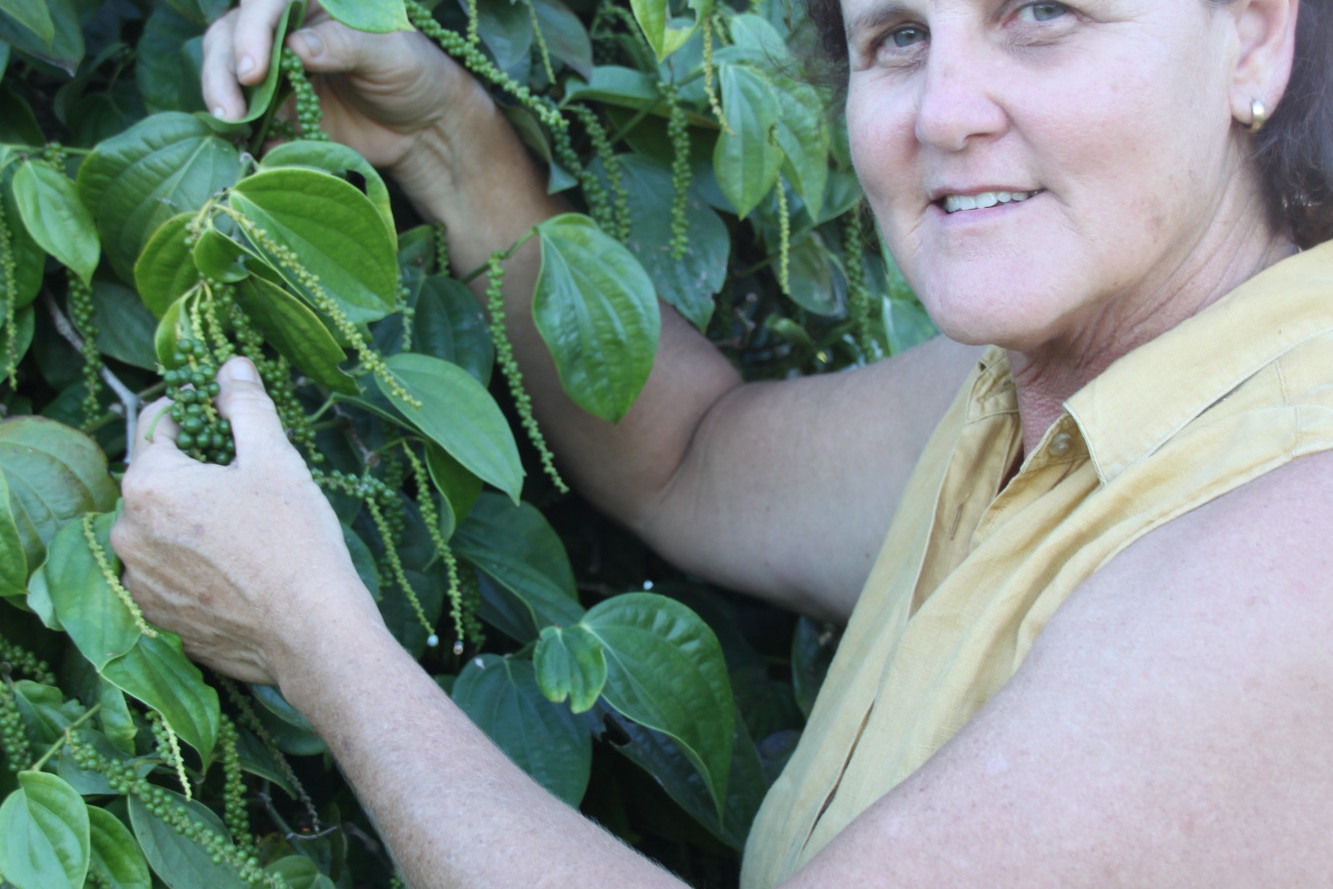Community & Business
23 March, 2021
North Queensland family produces only Australian grown Black pepper
BLACK pepper is the world's most traded spice, but most of it is grown in a narrow region on either side of the equator where the climate suits pepper cultivation.

BY SALLY TURLEY
BLACK pepper is the world's most traded spice, but most of it is grown in a narrow region on either side of the equator where the climate suits pepper cultivation.
Although it is native to South India, Vietnam is the largest producer of the ancient spice, growing around 163,000 tonnes annually, which equates to 36% of the world total.
But tucked away on a cane farm behind the little town of Silkwood, north of Tully, an Australian family have established the only commercial black pepper estate in Australia.
Donna Campagnolo's parents Levi and Myra, were looking for an alternative to sugar cane when the price plummeted in the late 1970's.
Levi and and his brother Louie Campagnolo were working in sugar plantations in the Phillipines and were inspired by the Black pepper they saw growing there.
They imported cuttings to be propogated from Indonesia, established the first 200 plants and associated infrastructure by hand and have been quietly growing pepper there since the early 1980's.
Donna Campagnolo bought the farm from her parents in 2005 and has been managing the farm and “Aussie Pepper”, while maintaining a full time off-farm job for several years.
She has 50 hectares under cane and 5000 pepper plants on three hectares, including a newly planted area, which will take three years until it bears fruit.
Ms Campagnolo said the colume of crop production builds until it peaks at around 6-8 years, but they had 30 year old plants that were still bearing and she said she would keep the vines until they died.
“We need a good dump of around 100mm of rain to bring on flowering and we can have multiple flowerings,” said Ms Campagnola.
“Picking occurs 7-8 months after flowering and fruit set, when the berry has turned red and the corn inside the berry is hard, although we sometimes pick green berries during months 4-7 to send to Sydney and Melbourne markets for South East Asian cooking . We usually harvest around two to three tonnes a year, but have picked up to five tonnes in a bumper season, which is then sold for $28/kilo.
“We have 12 locals who turn up to pick for two weeks each year.
“We lay mats down under the trees so no fruit falls onto the ground, we pick down onto the mats, then load them and bring them into the shed where the pepper ‘spikes’ are stripped from the twigs and leaves in a threshing machine.
“The peppercorns are then put through a large tumbler with blowers to eliminate more of the unwanted leaf matter before spending three to six days, depending on the humidity levels, drying in the sun.
“Rain around this time is a real issue, we have had to load the berries and take them up to Mareeba to dry there on a tarp some years. We could get solar driers, but they are too expensive to justify using for just 2 weeks a year.”
Next, the peppercorns are taken to a seed company at Walkamin to remove any remaining sticks, stones or leaves before being dried down to 10% and going into storage in 200 litre drums as whole black.
“We kibble, crack and grind the pesticide free peppercorns to the size required before packing them to order,” Ms Campagnola said.
“We mail a lot of product out to people all over Australia and overseas and supply most local IGA's in Innisfail, Cairns and on the Tablelands, as well as a couple of local delis, and outlets like Maggie Beer's Farmshop in South Australia and Herbie's Spices and The Essential Ingredient, both in New South Wales.
We always keep product aside for our regulars and because we sell out every year, we never have any old peppercorns on hand.”
As successful as it all sounds however, growing pepper is certainly not easy. The pepper vine is quite a pernickety plant that demands very specific temperature ranges and humidity levels.
Despite its spicy flavour, it has a number of predators including feral pigs and several insects which the Campagnolas control with parasitic (Anastasus) wasps all year round.
More devastating however is the fungal disease that infects the soil and can cause widespread losses throughout the plantation.
Sometimes, the only option is to leave that entire section of the orchard fallow and move on to develop a new clean area.
There is always the potential threat of another cyclone, such as TC Larry, who wiped the place out with winds up to 215km/hr, a year after Donna purchased it.
And of course it is a labour intensive, season dictated operation that constricts growers down to a two week picking window.
For Donna Campagnola however, it is a great mix of physical, outdoor labour and mental challenge to innovate ahead of the game, combined with a strong, growing market and opportunities for value adding.



